By David Vowell
Executive Director, Cherokee County Arts Council of NC
Artistic expressions of every type have always provided ways of delighting us, and the Arts Council believes very much in that delight making. Art, though, also has a serious side – an important role to play in providing each of us with information and new perspectives about the life and times around us, about our society’s history, and both the challenges and the dreams that are held by the people in our own community. With just the visual arts, let’s consider some examples then, with artists here in our area, that demonstrate for our benefit the serious role of the Arts.
SEEING OURSELVES
Beginning in March of 2020 the Covid pandemic imposed a prolonged period of isolation, from friends and family, often from coworkers, and from our normal daily routines. During this time, one local artist, Pam Strawn, discovered as she painted, that the work took on a somewhat dreamy, mystical look and she decided to refer to the paintings as Ancestors.
“It fascinated me how we are each such a unique expression of Creation, due to our biological and spiritual ancestors, yet we all are the same in our basic needs and desires. We all want nourishment, shelter, love, family….on and on. During early covid it did seem folks really became aware of our need and dependence on each other.” – Pam Strawn
SEEING OUR SOCIETY
In 2015 Ann Miller Woodford’s book, “When All God’s Children Get Together” was published. The subtitle, “A Celebration of the Lives and Music of African American People in Far Western North Carolina” points to the content found in its pages. The serious role of this literary work is to inform us, and thereby build bridges of understanding between the diverse racial population of our Appalachian communities. Until its publication there was no practical way for most residents to realize the serious influence African Americans have had on the life of the western counties of North Carolina – contributions that include work ethic, entrepreneurship, faith, music, art, and service to country and community.
Ann Woodford offers Black history presentations under the theme of Making the Invisible Visible. “It is important that people know more about the remarkable history of a people who have been largely overlooked or ignored and have still persevered while doing great work in our communities.”
The importance of Ann’s work led the Mountain Heritage Center at Western Carolina University to develop a traveling exhibit to allow numerous Appalachian communities to share this bridge-building visual and literary experience.
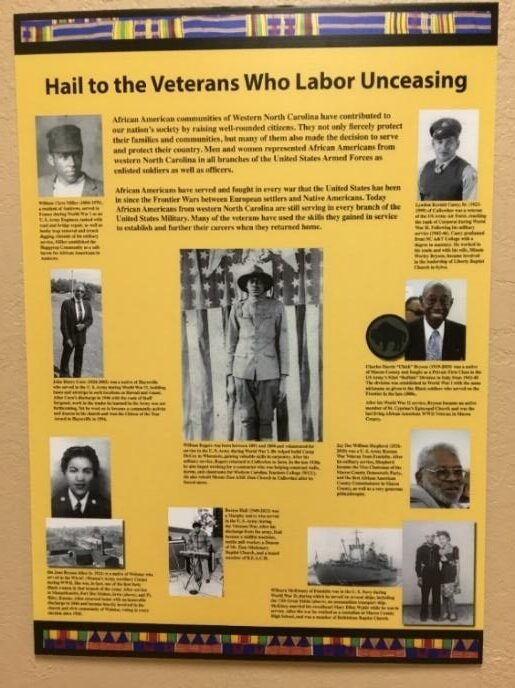
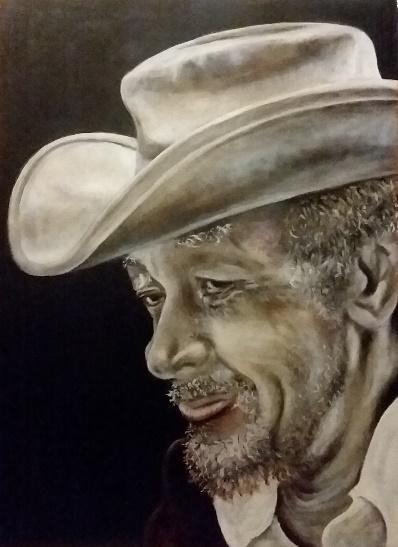
A panel from the WCU traveling exhibit.
“Forgotten Cowboy was painted to help us pay more attention to those who may be ignored, overlooked, or forgotten,” – Ann Woodford
IN HOMAGE TO VETERANS
Among the most serious art expressions are those that seek to address the sacrifices of former and active members of the Armed Forces. Art can provide a clear recognition of the effects of military service or even offer healing therapy. The small statue below was an entry by a local high school student in one of the Spring Student Art Shows we host each year. It’s a contemplative figure, but with a noose around his neck, recognizing the threat of suicide – a far too frequent tragedy among our military people. The painted mask pictured here was observed, along with a dozen others, at a display in the Asheville VA Hospital. The exhibit allowed participating head wound patients to tell their story – how they felt about both their service to country and the serious injury they suffered.

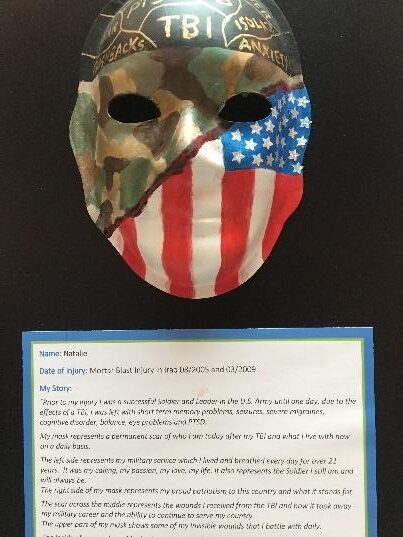
RECOVERY
Sometimes an artwork offers its most serious purpose to the artist, more than to the viewer. Pictured below, Michael Vasquez describes his graffiti style abstract to author Sukoshi Rice. Michael produced a series of paintings that allowed him to tell his story of recovery from drug addiction. Owning up to the facts of his life was an important part of the recovery process. While he could speak well of his journey, the paintings provided a starting point for telling others where his addiction had taken him and how he worked his way back to health.
OVERCOMING ADVERSITY
In September of 1990, American businessman David Rabhan returned to this country after being held in an Iranian prison for ten years, suspected of being a spy. Rabhan was a long-time friend of former President Jimmy Carter, having provided Carter his services as a pilot, way back in 1965 when Carter was first running for Governor of Georgia. The two men spent hundreds of hours in conversation as the future President was being ferried around the state to meet various community leaders. Jimmy Carter played an important role in getting Rabhan finally released from Evin Prison, near Teheran, Iran. Surviving ten years of harsh conditions and sometime brutal treatment, David Rabhan used his artistic skills, initially to pass time, but eventually to build relationships with guards who could help him, not so much to improve his living conditions, but to supply him with art materials.
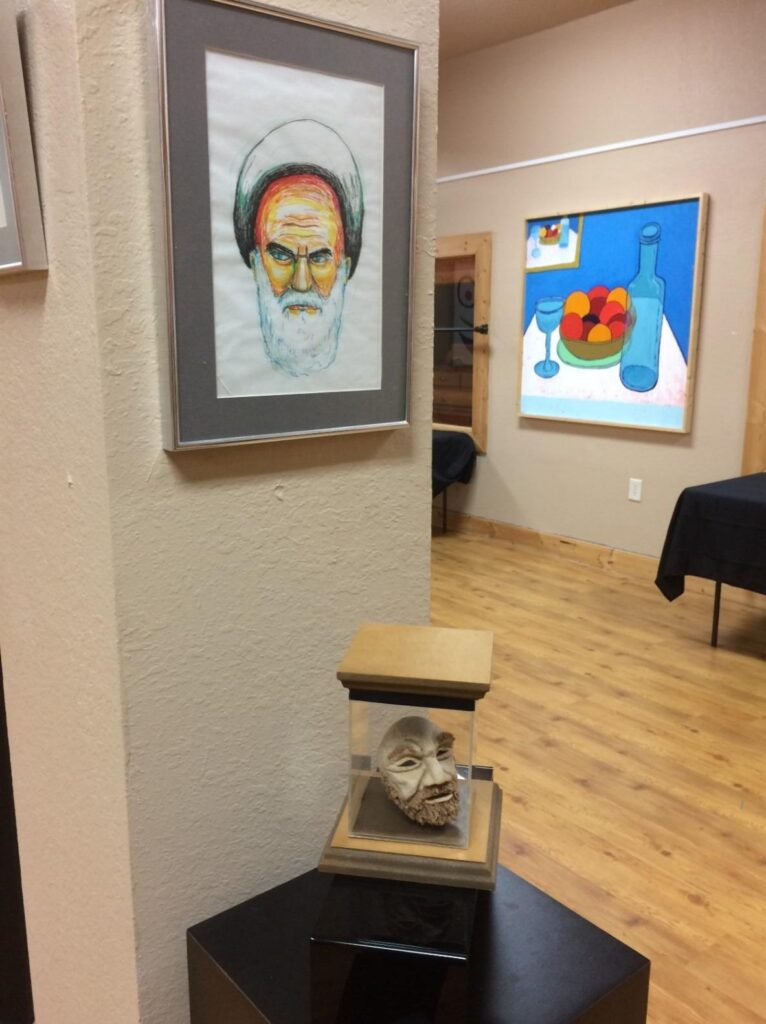
When finally set free, Rabhan was able to carry out, in canvas bags, over two hundred sheets of paper with drawn or painted portraits of fellow prisoners, and six round paper mâché boxes made from Farsi newspaper pages. In one of those boxes was a rare creation, a sculpture made of reconstituted breadcrumbs. His prison keepers so admired his skill, Rabhan could acquire some helpful favor in exchange for making a bread-crumb likeness for a guard.
INSPIRED BY THE BEST
A final consideration on the serious side of art is the actual quality of the artwork, reflecting the skill of the artist as well as the power of their created imagery to move us mentally or emotionally as viewers. After all, the Mona Lisa, and Washington Crossing the Delaware, did not become famous examples of art for their ability to simply entertain us.
There are artists who live and work in our own communities who also can be recognized for both their skill and for the power of the images they offer to us. There are those already mentioned above, such as Pam Strawn and Ann Woodford, and we will conclude with three other local examples of seriously fine art: “Athena” by Scott Davis, “Star Catcher” by Annie Fain Liden, and the amazingly personal sharing in Mary Ricketson’s recent book “Stutters.”
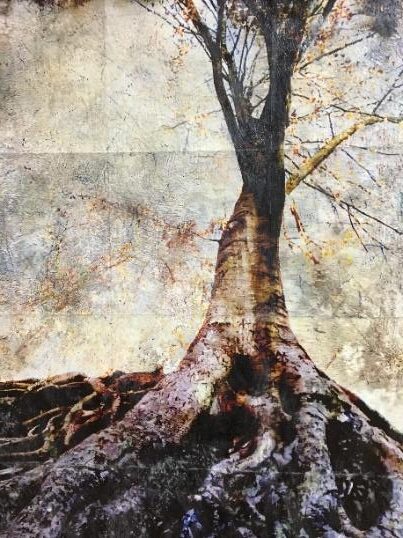
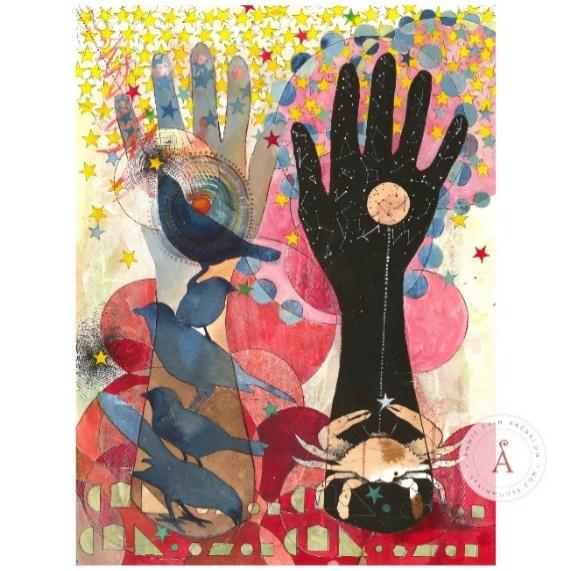
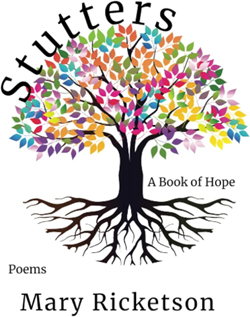
Every day, every one of us is impacted by some form of art. It could be our child’s picture they drew or the part they did in the school play. It could be the simple and fun landscape you did in a two-hour painting party. Might be the latest song released by your favorite singer. However much delight the huge variety of art in our world gives us, let’s appreciate the serious side as well, and be alert for the artists who show us the world in ways that help us grow as individuals and as folks who share the life of a wide community.